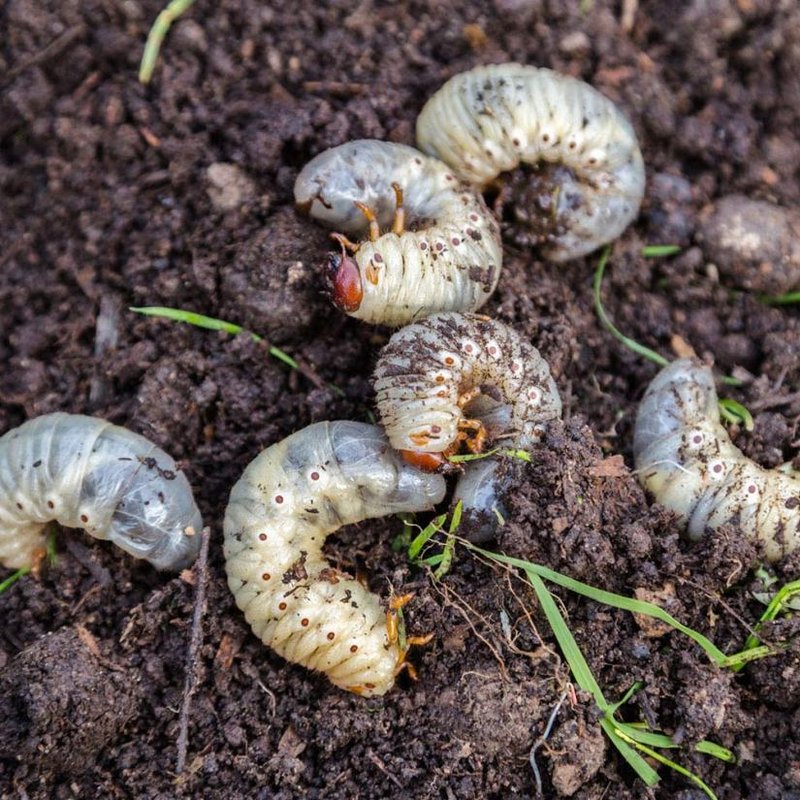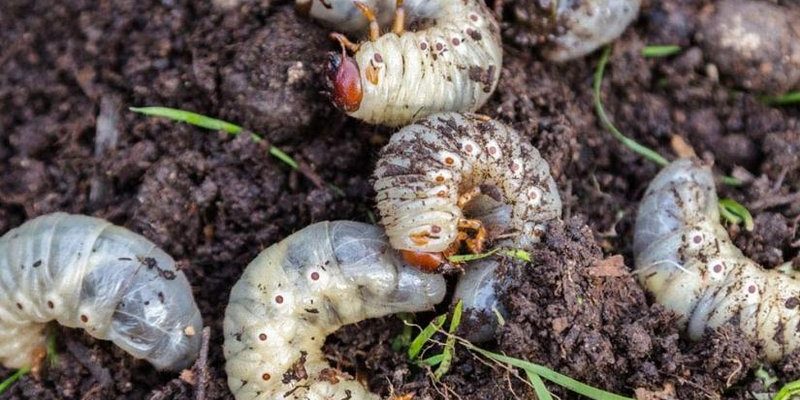
Think of grubs as the hidden troublemakers in your yard. They’re like the kids in the neighborhood who dig up the sidewalks—out of sight most of the time, but when they show up, they cause a lot of damage. Understanding their life cycle can really help you tackle any issues before they take over your beautifully maintained lawn. So, do grubs come back every year? Here’s everything you need to know.
What Are Grub Worms?
Grub worms are the larval form of various types of beetles, like June bugs and Japanese beetles. They typically have a C-shaped appearance and are white or cream-colored. You might have seen them lurking just below the surface of your soil. They feed on the roots of grass and plants, which can lead to unsightly brown patches on your lawn. Think of them as tiny, underground lawn vandals!
Grubs generally thrive in warm, moist environments. They love soft, rich soil where they can munch on tender roots. If you’ve ever pulled up a patch of grass and found these little guys wriggling around, you know they can be pretty common in certain areas. But what makes them come back or stay away?
Do Grub Worms Come Back Each Year?
The answer isn’t straightforward. Yes, grub worms can come back every year, but it depends on several factors. Their life cycle plays a crucial role in whether you’ll see them again. In general, grubs lay eggs in late spring or early summer, and those eggs hatch, leading to new larvae in a few weeks. So, if conditions are right, you can expect them to return.
However, the presence of grubs also relies on how well you manage your lawn. If you actively treat your yard with pesticides or natural methods to combat grubs, you may reduce their numbers significantly. So, it’s not just about whether they come back, but how prepared you are to handle them.
The Life Cycle of Grub Worms
To understand if grubs will return, it helps to look at their life cycle:
- Egg Stage: Adult beetles lay eggs in soil during late spring and early summer. The number can vary, sometimes reaching up to 40 eggs per female.
- Larval Stage: After about two weeks, the eggs hatch into grub worms. They begin feeding on grass roots and can grow quite large by fall.
- Pupal Stage: Once they’ve matured, grubs burrow deeper into the soil to pupate, usually during the colder months.
- Adult Stage: In spring, they emerge as adult beetles, ready to repeat the cycle.
As you can see, this cycle makes it entirely possible for grub worms to return each year if the conditions are right. They have multiple stages, and if you’re not careful, they can keep coming back like a bad penny.
Factors That Influence Grub Worm Populations
You may be wondering what makes grubs thrive or disappear. Several factors influence how many grubs return year after year:
1. **Climate:** Grubs prefer warm, moist conditions. If your area has a mild winter, it increases their chances of survival. On the flip side, harsh winters can kill off some larvae.
2. **Soil Conditions:** Soft, rich soil is like a buffet for grubs. If your lawn has dense grass and strong roots, there’s less chance for them to take hold.
3. **Pest Management:** Using treatments like nematodes or chemical pesticides can reduce grub populations. It’s essential to monitor your lawn and act if you notice early signs of damage.
Managing these factors can help you reduce the likelihood of a grub worm invasion each year, keeping your lawn in tip-top shape.
How to Prevent Grub Worms
If you’re tired of dealing with these pesky worms, there are several effective strategies to prevent them from taking up residence:
- Regular Lawn Maintenance: Keep your lawn healthy by mowing at the right height, watering deeply, and aerating the soil.
- Natural Predators: Encourage beneficial insects, like birds and ground beetles, that can help keep grub populations in check.
- Pesticides: If necessary, consider applying grub control products in late spring when the eggs are hatching.
- Diversity: Plant a variety of grass types and other plants. This can confuse and deter adult beetles from laying eggs.
Taking these preventive steps can contribute immensely to the health of your lawn and help keep grubs from becoming a recurring problem.
How to Treat Grub Worm Infestations
If you discover grubs have already taken hold of your lawn, don’t panic! There are various ways to treat this infestation effectively:
1. **Cultural Control:** This includes practices like rotating your planting areas, maintaining a diverse landscape, and managing watering schedules to discourage grubs.
2. **Biological Control:** Nematodes are tiny worms that attack and kill grubs. They’re a natural solution that doesn’t harm your existing garden life.
3. **Chemical Control:** Sometimes, stronger measures are needed. Look for pesticides specifically designed to target grubs and follow the instructions carefully.
4. **Physical Removal:** If it’s a small area, you might consider hand-pulling grubs or removing infested patches of grass.
With the right approach, you can eliminate the grubs and prevent them from becoming a yearly nuisance.
When to Check for Grub Worms
Timing is everything when it comes to managing grubs. The best time to check for them is late summer or early fall. At this point, they are larger and easier to spot. Here’s what you should do:
1. **Inspect Your Lawn:** Look for signs of wilting or brown patches, which can indicate grub activity.
2. **Conduct a Simple Test:** Pull back a small patch of grass. If it easily lifts and there are more than five grubs per square foot, you’ve got an issue.
3. **Act Quickly:** If you find grubs, take action immediately to mitigate damage and control their population before they reproduce.
Keeping an eye out during these key times can make a world of difference for your lawn’s health.
In summary, grubs can indeed come back every year, but their presence largely depends on climate, soil conditions, and your lawn care practices. By understanding their life cycle and being proactive with prevention and treatment strategies, you can keep your lawn looking lush and green.
If you ever find yourself scratching your head over those little buggers, remember, you have the power to manage them. With a little knowledge and some action, you’ll be well-equipped to tackle any grub worms that dare to invade your space. Happy gardening!

